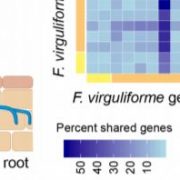
To Be or Not To Be Pathogenic: Transcriptional Reprogramming Dictates a Fungal Pathogen’s Response to Different Hosts
The fungal pathogen Fusarium virguliforme invades a wide spectrum of host plants, ranging from eudicots to monocots. Interestingly, fungal root colonization results in disease-producing phenotypes only in certain eudicot hosts (Kolander et al., 2012). For instance, F. virguliforme causes sudden death…
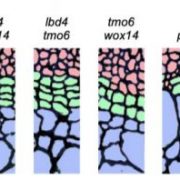
The Shape of Rings to Come: Systems Approach to Xylem and Phloem Formation in Arabidopsis
Plants have veins too. As in animals, the plant vasculature facilitates the circulation of water and nutrients across tissues and organs. Unlike animals, it originates from a self-renewing population of meristematic cells forming the (pro)cambium ring within stems and tree trunks and roots. Local signals…

Differential modulation of the pathogen transcriptome by distinct hosts
Baetsen-Young et al. identified key transcriptomic differences in coexpression networks following Fusarium virguliforme infection of symptomatic (soybean) vs. asymptomatic (corn) hosts Plant Cell https://doi.org/10.1105/tpc.19.00697
By Amy Baetsen-Young and Brad Day, Michigan State University
Background:…
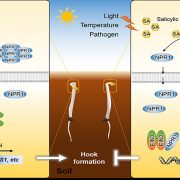
Salicylic Acid in Hook Development: Communication with Ethylene
Huang et al. found that SA inhibits hook formation and is dependent on the ET pathway in Arabidopsis. Plant Cell https://doi.org/10.1105/tpc. 19.00658
By Peixin Huang, Yichuan Wang, and Hongwei Guo
Background: For germnating seedlings to survive and become a mature plant, they must push through…
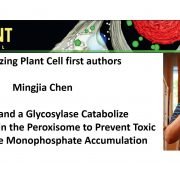
Recognizing Plant Cell authors: Mingjia Chen
Mingjia Chen. first author of A Kinase and a Glycosylase Catabolize Pseudouridine in the Peroxisome to Prevent Toxic Pseudouridine Monophosphate Accumulation
Current Position: Associate Professor, College of Life Sciences, Nanjing Agricultural University
Education: PhD at the Institute of Plant…
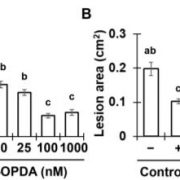
Xylem-mobile Oxylipins are Critical Regulators of Induced Systemic Resistance in Maize
In addition to promoting plant growth and development, the colonization of roots by beneficial microorganisms often provides aboveground tissues with enhanced resistance to pathogen attack. This form of resistance, referred to as ‘induced systemic resistance’ (ISR), relies on the long-distance movement…

Energy vs growth: Plant nutritional decisions are made by TOR
O’Leary et al. show that the TOR signalling pathway in plants responds to amino acid levels by eliciting regulatory effects on respiratory energy metabolism at night, uniting a hallmark mechanism of TOR regulation across eukaryotes. Plant Cell https://doi.org/10.1105/tpc.19.00157
By Brendan O’Leary…
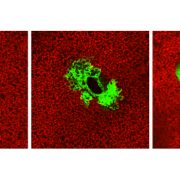
Taking Down Plant Communication Channels to Invade
Aung et al. reveal that pathogenic bacteria target plant plasmodesmata to colonize and invade surrounding tissues.
Plant Cell https://doi.org/10.1105/tpc.19.00707
By Kyaw Aung and Sheng Yang He
Background: Multicellular organisms like animals and plants host a multitude of microorganisms.…
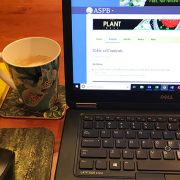
THE PLANT CELL Welcomes New Assistant Features Editors
The Plant Cell welcomes 12 new Assistant Features Editors (AFEs) for 2020. They join six continuing AFEs who started in 2019. We would also like to thank all of the original AFEs who stepped down from the editorial board in 2018-2019, who helped us to establish the program and provided valuable input…

